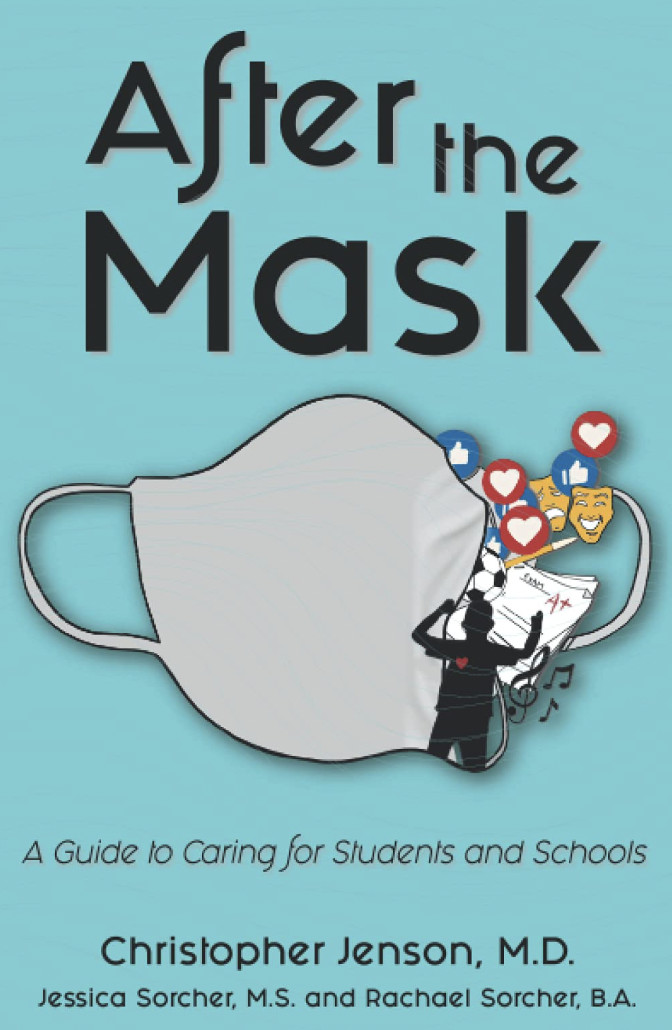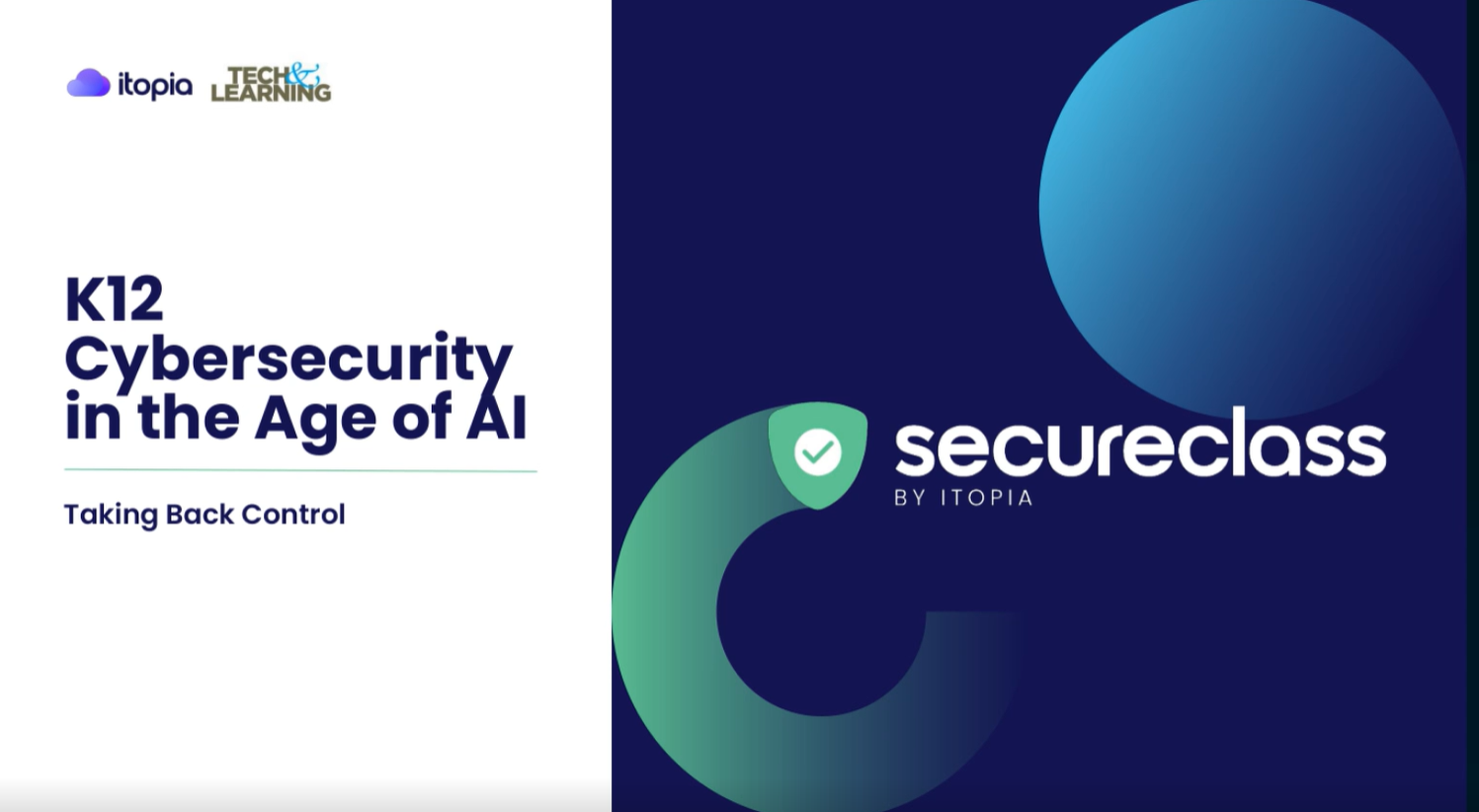An MD Turned High School Teacher’s Prescription to Improve School Mental Health
Teachers can make their lives easier and help students with their mental health by reframing their teaching and looking to healthcare for inspiration, says Dr. Christopher Jenson

When it comes to diagnosing and treating the mental health crisis facing students and educators, Dr. Christopher Jenson might be uniquely qualified.
Jenson began his career as an ER physician before switching careers and becoming a high school science teacher for nine years at Blue Valley School District in Kansas. His unusual career trajectory from medicine to teaching was prompted by his passion for helping young people and his own family’s situation. His wife is also a medical doctor, and when they had children, they thought it would be better if one of them had a more predictable schedule.
“When I made that segue, I was like, ‘Okay, I'll go teach. I'll do this for a while, and fuel that passion, and provide some stability for our family, and then I'll figure out some consulting job after that,’” he says. “Well, that plan turned into nine years of being a high school educator.”
Then when the pandemic hit in 2020, he realized there was a need to combine his two careers.
“COVID is when I discovered my niche,” he says. “It became glaringly obvious that schools and school districts needed help navigating health issues.”
Jenson’s book, After The Mask: A Guide to Caring for Students and Schools, was published last year and provides advice for school leaders on navigating the post-COVID era. Jenson also runs Diagnosing Education LLC, a school consulting service.
Much of Jenson’s work focuses on helping educators and school leaders overcome the dual student and teacher mental health crisis.
Tech & Learning Newsletter
Tools and ideas to transform education. Sign up below.
Understanding The Crisis

The trends in adolescent mental health were extremely troubling even before the pandemic.
“CDC data said between 2009 and 2019 that depression had gone up 40 percent in adolescents,” Jenson says. “Then the thing that really struck me, that hit me to the core, was according to the [CDC’s] Youth Risk Behavior Survey in 2019, roughly 18 percent of kids that were in high school had contemplated to some extent, the idea of suicide.”
That meant nearly 1 in 5 adolescents had contemplated suicide before the pandemic added fuel to the fire.
Teachers are also struggling. “Staff are going through high attrition rates and exhaustion,” Jenson says. He adds that potential solutions to the mental health crisis in schools need to benefit both students and teachers.
Improving Teacher and Student Well-Being

“Here's a difficult thing to swallow,” Jenson says. “Schools are not built inherently to support preventive mental health. They have a handful of counselors, they're lucky if they have a social worker. They're really blessed if they have a dedicated school psychologist, not every district does, but they try to provide support to children in whatever capacity their budget allows.”
To supplement the work of mental health professionals in schools, Jenson believes teachers can help ease mental health struggles of their students in a way that simultaneously makes their job easier. He believes this is possible by having teachers cut back on content while still meeting their state’s requirements, and implement emotional- and relationship-building exercises into each classroom.
“Although teachers are extremely taxed and exhausted, I think they would love the idea of feeling justified to get back to their favorite part of teaching, and that is connecting with kids,” he says. “Three specific things that teachers are qualified for: self-esteem, self-efficacy, and the power of relationships. While I think third-party curriculum is great, I don't think anyone can outperform a teacher.”
Putting This Into Practice
Jenson was able to build lessons helping students develop these skills by reframing his approach to content on certain days. “The state of Kansas, or any state, doesn't tell me how long I have to teach, they just say, ‘At some point cover the lung,’” he says. “So I started trimming my lessons and saying, ‘Okay, instead of spending three days on the anatomy of the lung, I'm going to do two days. And tomorrow we're going to talk about the ethics of lung transplants.’ I'm going to do it in a school-safe environment appropriate for the kids and the age that I'm dealing with.”
Together with his students, Jenson delved into the process of a lung transplant, asking questions such as, “Why do people need lung transplants in the first place?” “How do they pick who's going to get one and who's not?” “What's wrong with that process?” “What are some shortcomings in it?” “How would you design it to be better?” Jenson says these questions prompted interest and passion from students. “All of a sudden, yeah we're doing science, but what we're really teaching is empathy, problem-solving, efficacy.”
This type of discussion day can also serve as something of a break for teachers, Jenson says, because they don’t have to conduct lesson plans and it doesn’t have to generate homework.
Jenson says teachers can feel confident cutting back on their traditional content just a bit because students have access through technology to everything they might need to know about a topic, and it’s more important that they learn critical thinking and emotional skills than memorize more material.
Using Tech and Learning From Healthcare
The healthcare field also offers lessons in efficiency for the world of education, Jenson says. For example, many teachers feel guilty when they have to take time off because arranging coverage is difficult. Jenson proposes creating an on-call system, modeled on hospitals. In this system, a teacher might be on-call for colleagues twice a semester but at other times can take time off without guilt because they know a fellow teacher will be on-call to easily step in and cover for them.
“There's the art of triage and workflow,” Jenson says. “We do this for classroom needs, we call it classroom management. We can do it for ourselves, right? There is learning how to know the difference between caring and energy. I care about a lot of things, but I'm only going to devote my energy toward things where I can make an impact.”
In addition, Jenson advises using technology as a method of saving teachers’ time. For his classes, Jenson created detailed supporting materials available online for teachers and parents for each of his lessons. Then he would direct individual students to the resources they needed in particular
“There's an approach to treating chest pain in a hospital,” he says. “You kind of follow an algorithm. Now, every patient is different. So you'll start down that algorithm, and then you individualize their care. The point is there is still an algorithm, and technology allows you to kind of create an algorithm for predictable needs in a classroom setting so that you reduce your workflow. And then you have a conversation with a kid and you individualize it, but until you get to that point, you've saved yourself a lot of time.”
Erik Ofgang is a Tech & Learning contributor. A journalist, author and educator, his work has appeared in The New York Times, the Washington Post, the Smithsonian, The Atlantic, and Associated Press. He currently teaches at Western Connecticut State University’s MFA program. While a staff writer at Connecticut Magazine he won a Society of Professional Journalism Award for his education reporting. He is interested in how humans learn and how technology can make that more effective.

